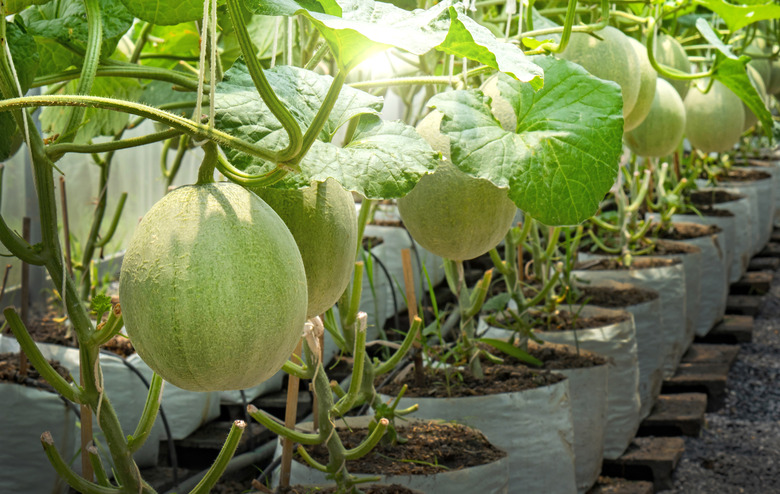How To Grow Tomatoes, Watermelons, And Cantaloupe Together
Are you trying to figure out how to grow tomatoes, watermelons and cantaloupe together? Fruit and vegetable gardens burst into bloom in spring and summer for eventual fruit harvest, but rarely consist of one specific plant variety. Gardeners plant a range of their favorite fruits and vegetables for wide, satisfying harvests.
Warm-season plants like tomatoes and melons thrive together with the same temperature, sun, nutrition and water needs, but they require generous spacing for growth. Plant these crops at the same time, and with the same considerations.
How to Grow Tomatoes, Watermelons, and Cantaloupe Together
1. Start Plants Mid-Spring
Start tomatoes, watermelons and cantaloupes in mid-spring when the frost lifts. All three crops need starts at 60 degrees to 65 degrees Fahrenheit, dying when fall frost descends. Start seedlings indoors to give these long-season plants head starts on their growing seasons. You can use seed starting trays or pots to grow the seedlings indoors.
2. Choose Planting Sites
Designate planting sites for each of the plants. Tomatoes and melons require adequate spacing for growth and fruit production. Tomatoes grow upright, and you can use tomato cages to encourage a more upright growth. Melons grow on vines that spread in all directions. You can use supports to encourage the vines to grow upward to save space.
Choose sites with all-day sun and good air circulation, and allot at least 5 to 6 square feet for each crop. Put the tomato plot on the southern or northern side of the garden to avoid shading out the lower-lying crops.
3. Amend the Soil
Amend the soil through all three plots to a depth of 6 to 8 inches. Dig 3 to 4 inches of organic compost into the topsoil to increase nutrition, drainage and moisture retention. Tomatoes, watermelons and cantaloupes are hungry, thirsty plants, and do best with rich, crumbly soil. Turn 6-24-24 or 8-32-16 fertilizer into the top 4 inches of soil throughout to encourage quick root establishment.
4. Plant the Seedlings
Plant watermelons, tomatoes and cantaloupes early enough to accommodate their growing seasons. Tomatoes need 45 to 80 days to bear fruit, depending on the cultivar, while watermelons need 70 to 85 days and cantaloupe vines need 70 to 110 days.
Plant tomato seedlings 24 to 36 inches apart in a row. Space rows at 4 feet, and give each plant a vegetable cage for support. Plant watermelon seedlings at every 5 feet in the row, and cantaloupe seedlings at 4 feet apart in the row. Plant only one row of each variety of melon to minimize space usage. Each plant produces several melons.
5. Water the Plants
Give the garden 3 inches of water to settle the soil, and put the plants on a schedule of 2 inches of water every week. The plants cannot produce growth or fruit without adequate moisture, but giving them too much water can cause problems, too. Water the plants at the base instead of from above to get more water to the roots and to keep the leaves dry.
6. Mulch Around the Plants
Lay 2 inches of mulch over the soil between the plantings to maintain moisture and warmth for the plants. Leave about 2 inches around the plant stems with no mulch to prevent rotting of the stem and to make it easier for water to reach the roots.
7. Fertilize the Plants
Fertilize the plants with a balanced 10-10-10 fertilizer at mid-season to encourage best blooming and fruit production.
